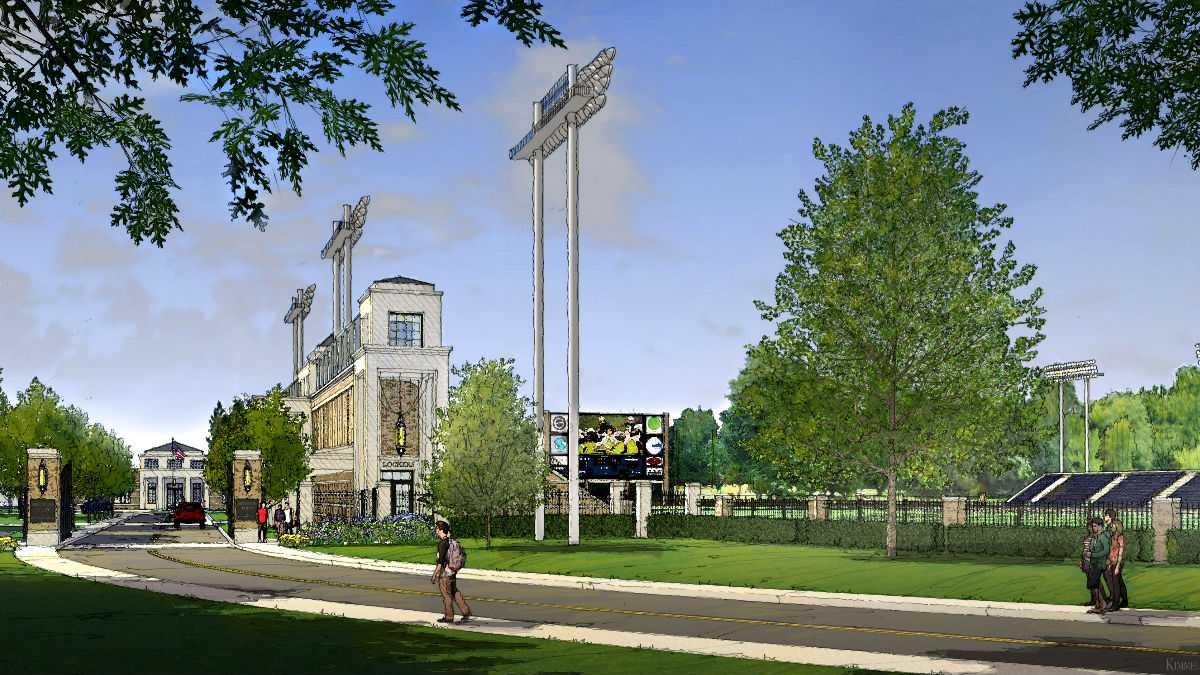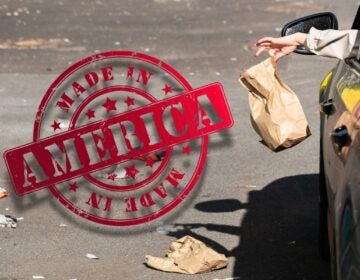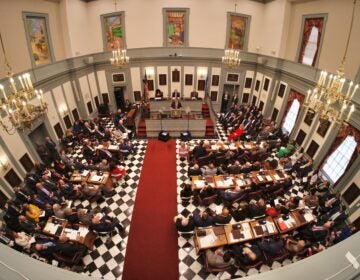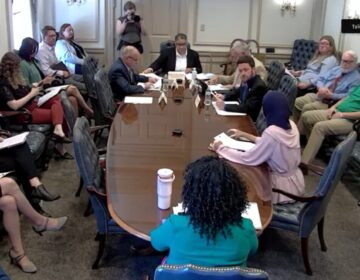Wilmington looks at next steps for Baynard Stadium

An artist's rendering of shows what a renovated Baynard Stadium would have looked like under the Salesianum plan. (photo courtesy city of Wilmington)
Mayor Mike Purzycki, D-Wilmington, and members of a working group he created are collecting ideas on how to address a so-called disheveled stadium in Wilmington.
In March, the Mayor established the 11-member working group to study the needs of Baynard Stadium, after renovation expectations hit a road block last year.
On Friday, Purzycki’s office released a “preliminary report” from the group’s initial findings, and the group will hold a public meeting Monday night to collect more information for a final report.
The stadium, owned by the city but managed by the State Parks and Recreation, was built in 1922 and hasn’t been renovated since 1972. Last year, part of the bleachers were condemned following engineering assessments.
“Baynard stadium is something the public uses on a regular basis. If you go out there on a daily basis there are people out there walking the track. And anyone who’s been to a game lately, the temporary bleacher repairs we made last August, they’re temporary, they’re exactly that,” said Parks and Recreation director Raymond Bivens, a member of the working group.
“The stadium needs a major cash investment and infusion. It has a lot of potential it’s not able to keep up to because of the limitations. But it’s a facility in the heart of the city—I don’t think anyone in the public has wanted to see it continually decline.”
In the fall of last year, Salesianum School offered to maintain, manage and revitalize the facility, and spend as much as $20 million on renovations. However, the all-male Catholic school withdrew their offer after State Rep. Charles Potter, D-Wilmington and some City Council members proposed forming a task force and allowing the public to comment on the deal.
The initial report addresses the future use, maintenance and management of the sports facility on West 18th Street. The document includes proposals to complete repairs and pay for maintenance costs and management costs, and additional construction of the 95-year-old stadium.
However, Potter, also a working group member, argues they have not submitted a primary report to the mayor, that they have only looked at raw data so far.
“The mayor’s people jumped the gun by putting that information out. We have not formally agreed on anything. It’s far too soon, we’re stilling working and it was very premature,” he said.
“I think all parties should be at the table. We discussed bringing all the schools (who use the field) to the table, we haven’t done that yet. It’s very early, that’s why I’m very disappointed his office would put something out as they did. I want the public to have its input, we take that information and we take it back to the group, analyze it and look at all the options we haven’t looked at yet.”
Purzycki’s office said the Mayor would not comment until the final report is completed.
The preliminary findings state that allowing the system to remain the same means the stadium’s condition would rapidly decline.
The group weighs the option of a city-owned, state-operated stadium—but it would cost the state $12.6 million, an amount the group believes the State cannot afford.
The report also considers a city-owned and state-operated stadium that would cost the City $18.4 million in bonded financing. The group is also weighing the option of a city owned and operated stadium of bonded financing and operational funding costing $22.2 million. Both options would require the city to either make significant budget cuts or absorb increases in its annual operating budgets over the next 20 years to cover the debt service payments related to an increase in overall borrowing.
Finally, the report considers a public and private partnership they say would secure the stadium’s future and is likely to involve minimal expenditures on the part of city taxpayers.
“I don’t think a lot of people realize it’s a city-owned asset. While the state has been doing a lot of the ongoing repairs, it’s not a state-owned asset,” Bivens said. “So it’s really a city decision on what the best path forward is, but it needs a cash investment of $12 million—probably on the conservative side—it has accessibility needs, it has a lot needs in that respect.”
During Monday’s meeting the working group will give a presentation focusing on the stadium’s needs and the five funding options, and the public will have an opportunity to comment.
“I passed the stadium the other day, they had a lot of activities there, they were running track and doing other events. The stadium is a public asset and we want to make sure it’s in the best condition, that it’s safe for people, that it’s useable,” Potter said.
“We have over 3,000 to 4,000 more youth that have not been able to utilize that field, and with the updates we want to do we want to have more youth involved, and people throughout the city and state use the facility. I’m hopeful we can get back on track and do what we’re supposed to do.”
The public meeting is 7 p.m. on Monday at Warner Elementary School on West 18th Street in Wilmington.
WHYY is your source for fact-based, in-depth journalism and information. As a nonprofit organization, we rely on financial support from readers like you. Please give today.





